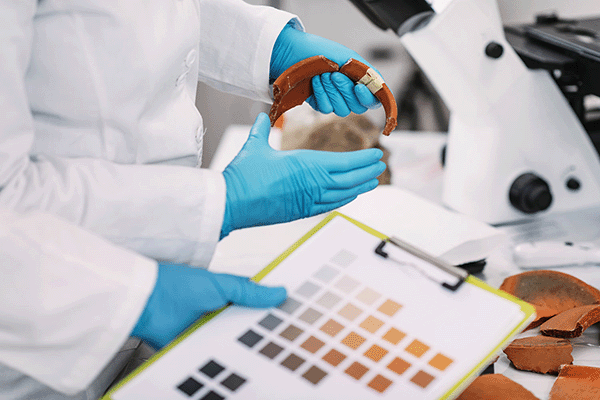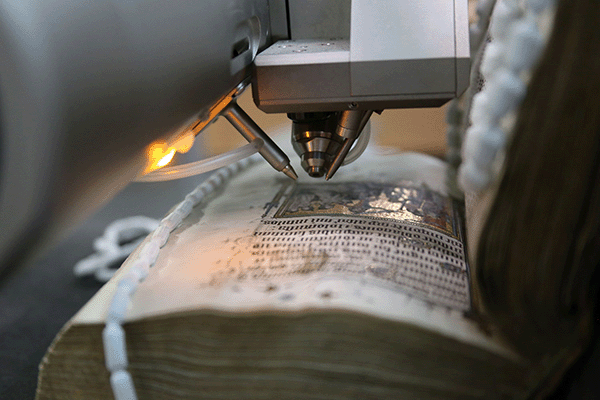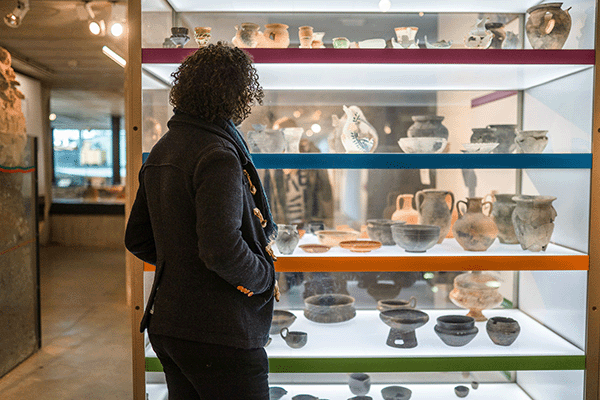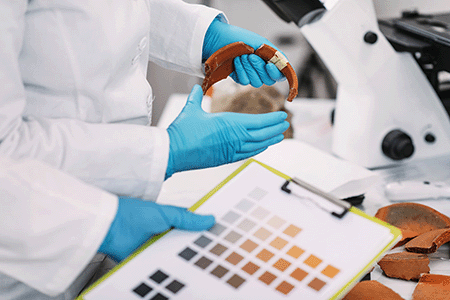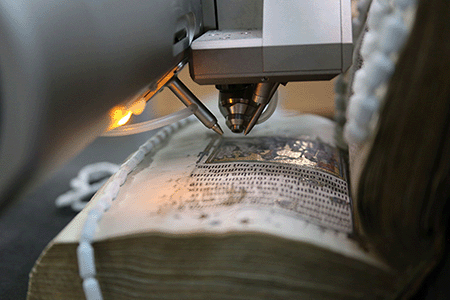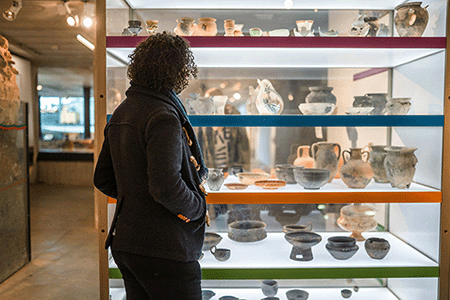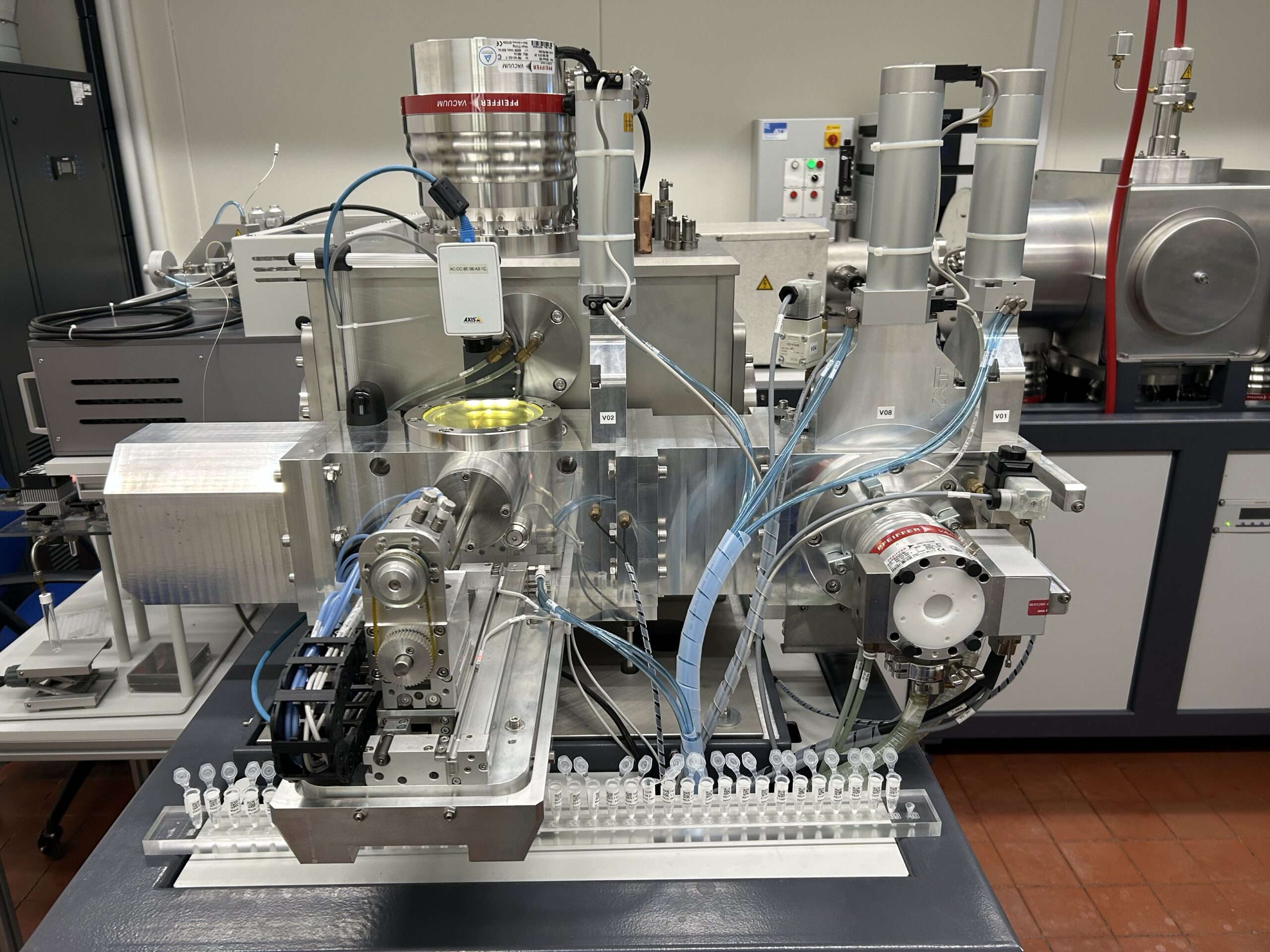The RICHeS team visited Dr Lucy Cramp and her team at the University of Bristol to learn more about their innovative work in applying mass spectrometry (MS) to the field of heritage science. This research is being supported by RICHeS through the AHRC Centre for Chemical Characterisation in Heritage Science (C³HS) an ambitious initiative aiming to establish a world-class, UK-wide “one-stop shop” for MS services tailored to the needs of the conservation and heritage science communities.
Pushing the boundaries of heritage science with Mass Spectrometry
Mass spectrometry is a powerful analytical technique that helps scientists understand the molecular makeup of materials by measuring the mass-to-charge ratio of ionised particles. During the process, a sample is charged (ionised) and some of these ions are broken into smaller ion fragments. These ions are analysed based on their mass-to-charge ratio, with the pattern of fragment (and molecular) ions detected providing a fingerprint that can be related back to the original structure of the molecule.
This technique can be used to analyse tiny samples with high precision and unravel the molecular compositions and isotopic signatures of diverse historical materials. In practice, this means that researchers can examine minute samples of historical materials and identify compounds such as natural dyes, oils, resins, and waxes offering crucial insight into their composition, provenance, and usage over time.
The University of Bristol has long been a leader in adapting and refining MS methods for heritage science applications. Its state-of-the-art facilities and pioneering methodologies have been instrumental in determining the nature and origin of heritage objects, informing conservation strategies and providing precise calendrical dates.
Recent years have seen significant methodological and instrumental advancements at the University of Bristol, expanding the scope of research questions addressable through molecular analysis of heritage materials. The university’s efforts to disseminate these approaches, including guidance publications and training sessions in collaboration with Historic England, have led to increased awareness and demand within the heritage sector. Notable collaborations have resulted in impactful discoveries, such as dating the first farmers in London using pioneering single-compound radiocarbon dating methodology, and uncovering the formulation of a Roman cosmetic cream.
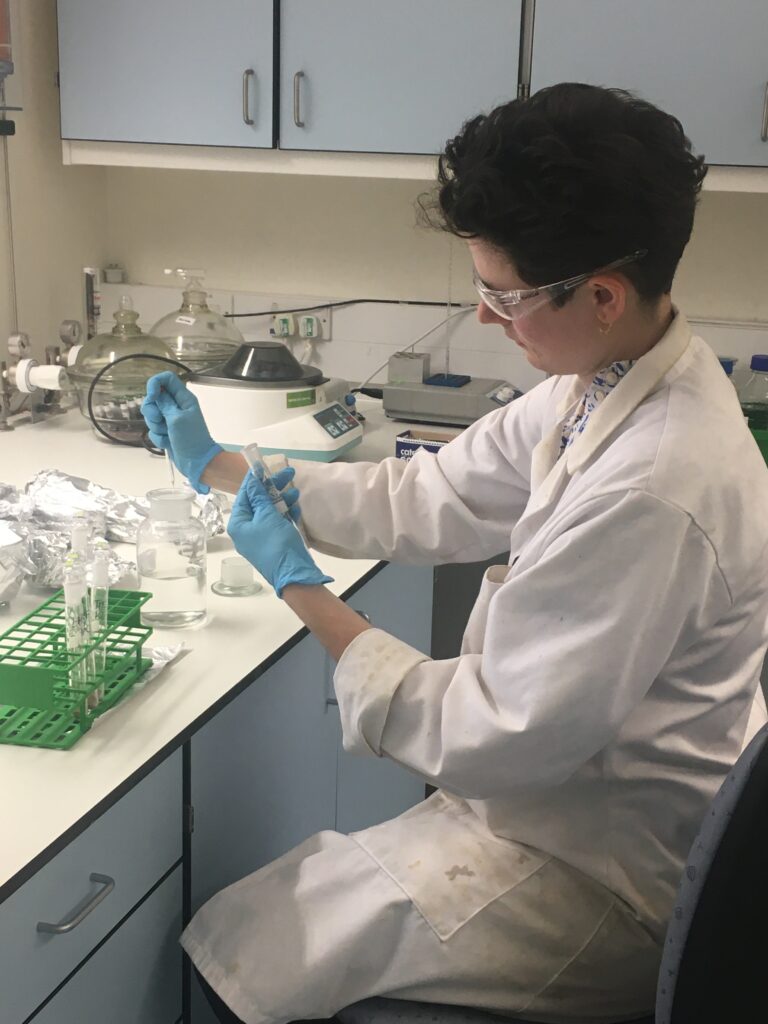
Laboratory researcher extracting lipids from archaeological pottery in Department of Anthropology and Archaeology laboratories
A national resource in the making
The university’s substantial investment in this research area is evident through its dedicated laboratories and instrumentation, utilised by researchers across the Schools of Arts, Chemistry, and Earth Sciences. RICHeS’ investment will support the enlarging and re-fitting of laboratory space in the School of Arts to accommodate new state-of-the art equipment. This project builds on the existing presence of instrumental capabilities at the University of Bristol, and we enjoyed a guided tour of three core laboratories.
The launch of Dr Cramp’s RICHeS’ project coincided with her 24-25 Enterprise Fellowship at the University of Bristol, in which she is focusing on re-modelling the commercial offering of organic residue analysis. This will be integrated into the AHRC C³HS, that aims to integrate four major areas of molecular and isotopic analysis under one organisational umbrella, providing a unique combination of advanced capabilities worldwide.
C³HS will provide:
- A findable and accessible route for external heritage users to connect with cutting-edge facilities
- Dedicated expert support in multi-analytical project design, coordinated by a facility manager
- Access to a suite of world-class facilities spanning a breadth of separation and characterisation techniques for organic heritage materials, including training and interpretative support
Looking ahead
The RICHeS team’s visit highlighted the University of Bristol’s commitment to advancing heritage science through MS. The establishment of C³HS marks a transformative step for UK heritage science, significantly boosting the capacity for high-resolution chemical characterisation and fostering collaborations across disciplines.
Dr Lucy Cramp shares:
“We were delighted to welcome the RICHeS team to Bristol to see our heritage science facilities and activity across three nodes within the University of
Bristol. As well as the step forwards in capability, the RICHeS funding and associated staffing infrastructure we will put in place will enable real cohesion
across these analytical mass spectrometric techniques. This we feel will have a major impact on the accessibility of these approaches to the wider heritage sector, and we are incredibly excited about the new collaborations and findings that this will bring“

